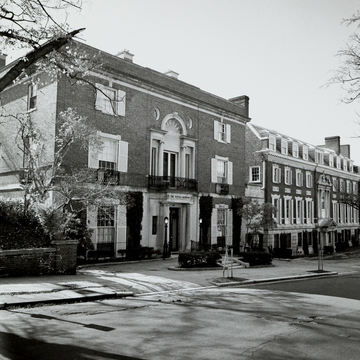You are here
The Textile Museum (former)
It is appropriate that the central axis of the Myers House is now visible from the sidewalk to the terraced garden through a glass door (replacing the original), as John Russell Pope focused the facade's and house's architectural energy there. Limestone walls extend beyond the Doric porch whose two columns abut their corresponding pilasters, the whole severe in detailing and refined in proportions. Above, an Ionic Palladian window with a delicately carved limestone tympanum occupies the central field of both upper stories.
Myers, a textile collector and connoisseur, joined his home to the adjacent Tucker House to establish the Textile Museum in 1925. The Textile Museum relocated to George Washington University's Foggy Bottom campus in 2015. The joined houses are now a private residence.
Writing Credits
If SAH Archipedia has been useful to you, please consider supporting it.
SAH Archipedia tells the story of the United States through its buildings, landscapes, and cities. This freely available resource empowers the public with authoritative knowledge that deepens their understanding and appreciation of the built environment. But the Society of Architectural Historians, which created SAH Archipedia with University of Virginia Press, needs your support to maintain the high-caliber research, writing, photography, cartography, editing, design, and programming that make SAH Archipedia a trusted online resource available to all who value the history of place, heritage tourism, and learning.














